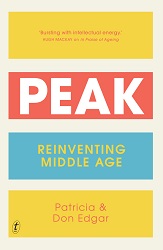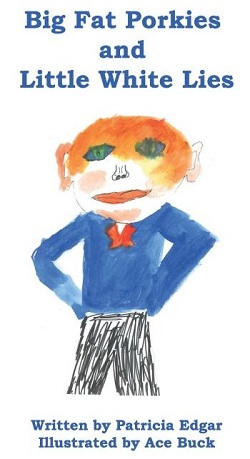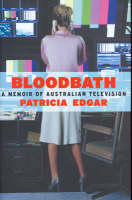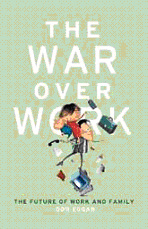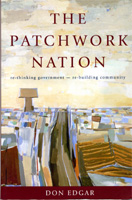Australian children's media is in crisis but a digital children's channel on the ABC is not part of the solution.
Patricia Edgar, 2008
In the lead up to the recent election John Howard committed $82 million over 4 years to establish an ABC digital television children's channel. The channel would screen 15 hours a day between 6AM and 9 p.m. seven days a week providing 5400 hours of 'distinct' children's programming throughout the year. It was to be free of commercial advertising and age appropriate for children from preschool up to 17 years. Forty million dollars was to be spent to acquire the rights of existing children's programming and 50% of all content on the Australian Channel was to be Australian made. But Kevin Rudd did not say “me too” and since the election Stephen Conroy the Minister for Communication has been cagey, saying the government's response to this proposal will come in the May budget.
Australian children's media is in crisis and so are our children. Their future; their health, education and well-being are bound up with media policy and it is time for an integrated approach that will serve the education revolution, give young children a head-start in life and allow them to become partners in the technological revolution that is so much a part of their future well-being.
Children's media is no longer simply a leisure activity, something to enjoy when the serious business of their lives is taken care of. Rather it is integral to their lives. There are more televisions than people, and more mobile phones and portable video devices in the Australian market than televisions. Young people are leading the technological revolution in ways that no one predicted, yet the role of content is ill-defined. So there is an opportunity to harness the potential of new media for an education revolution. Computers are not just a new tool; they represent a new way of thinking which children relish. Child policy development in all areas will be ineffective if it ignores the role of the media and allows the free market to dictate the content that will consume children's time and shape their behaviour and values.
So Stephen Conroy's broadband plans, his relationship with ACMA and the media companies are as central to the education revolution as Julia Gillard's and Kevin Rudd's plans are for reform of the education system from early childhood to the tertiary sector. Instead of fearing new media and limiting opportunities, kids should be allowed to 'power up for school' and show their teachers what they are learning instinctively outside the classroom. Teachers must train to provide the support and the scaffolding to help students learn with new media and direct their boundless creativity.
There is a now a crisis with children's media globally which is leading to a rethink of media policies. Australia is slow to start but can learn from recent advances in the UK and the USA. Australia was once we a leader in the international children's media policy debate but our children's producers have been remarkably quiet, busily enjoying the fruits of the labour we and others expended many years ago to put in place a system of regulation and subsidy which would serve the child audience. That era has come to an end: technological change has overtaken our regulatory system and we have 'a new child' with very different needs and interests from those we put in place for children in the 70's and 80's.
Back then we aspired to achieve an Australian Broadcasting system where our children could take for granted they would see stories which taught them about their culture and place in the world. The UK was our model. There the BBC and ITV competed to create the best possible children's programs. Their public service traditions, production standards and budgets ensured the best quality programming in the world. Australia came to match them through Children's Television Standards (CTS) regulating commercial television; tax incentives and a film bank the Film Finance Corporation (FFC) which subsidised production of Australian stories. A government subsidized, Australian Children's Television Foundation, demonstrated we had the talent to produce exciting, innovative, distinctly Australian programs. We carved a niche, reached our audience and earned Australia a reputation among the best television producers in the world. Through the Standards advertisers were monitored and kept in their place.
But over the last two decades the system has eroded. With the onslaught of branded, commercial, American Children's Channels and public broadcasting systems around the world becoming clones of these commercial channels, the ideals and traditions that once drove children's programming have been sacrificed on the altar of the free market and our children are suffering the consequences.
Activists, health workers, educators and concerned parents have been raising their voices over the past decade concerned about increasing commercial exploitation of children which they see fuelling a rise in bullying and obesity; an obsession with appearance and fashion; depression, as children's images of themselves do not measure up to the media ideal. Young children are sexualised while they are fed mind-numbing banal programming between the many advertisements. Parents have no chance to counter these influences in the face of skilled child and consumer psychologists who assist companies to market effectively to children.
In the UK there is a serious attempt underway to come to grips with the problems affecting children. A damning report released December 10th leaves little doubt that the media is seen as the root cause of much of the damage being done to children. The British Government is moving to clamp down on some of the worst excesses. Ofcom, the Office of Communications, the UK regulator, banned junk food advertising in children's programs (August 2007) and on December 9th announced an inquiry into the possible harmful effects of advertising on children and the commercialization of childhood.
This inquiry will take place alongside a larger British initiative announced Dec11th; a 10 year project entitled The Children's Plan, Building brighter futures. This venture, designed by a newly created Department for Children, Schools and Families aims to put the needs of children, young people and families at the centre of all government services and “make England the best place in the world for children and young people to grow up”. It is ambitious, built on sound principles which recognize the important role parents play in nurturing children's talents. It stresses the importance of childhood as a period that should be enjoyed, and declares that services should be shaped and responsive to children, not designed around professional boundaries. But there is a glaring oversight in the Plan: it does not deal with and integrate the media needs of young people and the role media play in their lives. No doubt this omission is because media policy is developed by a separate Department but if the Plan is to succeed media policy must be integrated into the wider plan.
Ofcom however continues to struggle to find a way to preserve quality children's television and it is looking beyond its brief for solutions. In October 2007 Ofcom published the most detailed analysis of British children's television ever undertaken. It found while there is more children's programming than ever before, due to the explosion in digital channels, an ever smaller proportion of programs are made in the UK. From fewer than 1000 hours per year in the 1960s the total volume of children's programming broadcast across all 25 channels (now available) grew to 113,000 hours in 2006. But only 17 per cent of programs broadcast were from the UK and first release UK programming counted for only one per cent of total hours. 61% of children's programs broadcast in 2006 were cartoons, with the proportion of drama - once the flagship of the BBC - down to 12 per cent. Of the imported material 46% is American. The report also showed that parents overwhelmingly believe that children's programming should help children to learn and develop, should increase a child's awareness of different types of people and alternative viewpoints, represent different cultures and opinions,
Parents care as much in Australia as they do in the UK. They expect television to help kids understand and reflect their own culture. American programs, no matter how good they are (and most do not fit that description) cannot do this, yet they dominate our screens.
The interesting thing about Ofcom's approach is that it is moving outside its brief from Government. The regulator is acknowledging a market led approach has undermined children's programming and is looking at ways of intervention. Most solutions will lie outside Ofcom's existing powers; it will need the government's backing, but they have announced their intention “to see things through the lens of viewers. Our responsibility is for the consumer and citizen”. (The Guardian, 8/12/07). Under active consideration are tax incentives, direct subsidy from a contestable fund, and the possible creation of a new channel focused on broadband delivery to serve all children independent of the BBC which is now seen as making too many budget cuts in the children's area to be considered a reliable provider of children's programs. Practical action is the objective; a commendable approach in a time of crisis.
Can the same be said for ACMA, the Australian Communications and Media Authority, our media regulator? ACMA announced a long overdue review of the Children's Television Standards in December 2005. Although ACMA claims the original Standards came into effect in 1990, in fact they were introduced in 1979 and revised during the early 80s. While the number of hours of children's programs has increased there has been no major reconsideration of the policy underpinnings of the Standards in nearly 30 years.
The objective of the CTS has always been to ensure that children have access to a variety of quality television programs made specifically for them. The development of new media in recent years and the social changes that have accompanied technological change means the needs of children have changed and a radical rethinking of the CTS needs to occur. But this is not the plan. ACMA has approached its review by working from the current rules asking questions about how the CTS should be varied as a stop gap measure.
ACMA has said it is limited by existing legislation and it is a requirement on ACMA, they say, that they 'not impede broadcasters'. On these matters ACMA could learn a lesson from Ofcom and acknowledge that the broadcasters have never shown an interest in serving children; they program what they do to avoid breaking the law. That's all they do. ACMA's responsibility, like Ofcom's, should be to the child - the consumer and citizen. To find solutions to current problems it will need to step outside its brief and consider options broadly - then, like Ofcom, recommend to government what should be done.
It is clear from the ACMA discussion paper, issued in August 2007 that the drama quota - the lynchpin of television cultural policy for children - is not working. The quota was intended to bring Australian stories to Australian children and did for a time. Now, as in the UK, there is a very high quota of animation within the drama quota which undermines the cultural content purpose. As well, expensive drama quota programs are going to air when there are few children in the audience because the networks don't want children's programs interfering with their main game - targeting the mass audience.
One of the most contentious ideas put forward in the ACMA paper is a 'tradeable obligations scheme' which would allow a network to take on the programming obligations of another network to increase the amount of children's programming across a broader number of hours in a day - in fact a dedicated children's television channel would fit well under the ACMA definition. In this single case ACMA does exceed its brief to explore a possible scenario where the ABC (which is not regulated by ACMA) could take on the C (Children's) and P (Preschool) programming obligations from a commercial broadcaster, thereby allowing them to relinquish any obligation to transmit children's programs at all. Perhaps all three commercial networks could go for this option. Then what would we have: a dedicated children's channel on the ABC. One has to wonder if this is not exactly what the government and ACMA had in mind with the ABC proposal John Howard supported. Perhaps he wanted to relieve the commercial industry of the burdensome obligation of children's programs altogether.
This brings us to the proposal for an ABC digital channel. It is not at all clear what would be shown on this channel; public comments are confusing. Part of the supporting argument has been that the library of children's drama produced with government subsidy and held by the ACTF will be shown. In a recent discussion on ABC Radio National Dec 6th on the state of children's television, the recently appointed head of children's programming at the ABC, Tim Brooke-Hunt, was given the opportunity to spell out his plans. His response was weak, lacking totally in a vision for the future. He claimed the ABC had “enormous strength” in preschool programming and said that kids older than eight years “did not find it so attractive to be watching the same channel as their little brothers and sisters who watched Play School”. The “major attraction of the new channel” he saw as “an ability to actually create a brand, a destination of choice, a very special place that kids can call their own”. This is the kind of talk we have been hearing from Nickelodeon and Disney for more than a decade. How will this be achieved? Brooke-Hunt intends “the Australian content to be what differentiates us from the competition”.
This is an unrealistic and unconvincing response. The amount of money suggested over four years won't go far if expended on new quality programs, so this means the new channel will show repeats of what we already see on the ABC both local and overseas in origin. The library of available good Australian programming, which it is claimed will be shown, is very limited.
The programs we can expect to see on an ABC digital television channel will add little of value and nothing new for today's children. The majority of programming hours on such a channel will still be for the preschool market. They are the only children in the audience from 8.30 am to 4.0 pm five days a week and they have become the most commercially exploited group in the history of children's television. As Brooke-Hunt says they are already well catered for - certainly not with programs worth watching - but with programs that treat them as consumers and prepare them to want all manner of merchandise associated with the programs.
Mark Scott, the ABC Managing Director, said recently (SMH December 8) he “would not compromise the public broadcaster with advertising”. But children's programming has been compromised on the ABC for the last 15 years. The program is the advertisement for all the merchandise that ABC Enterprises sells in ABC shops and promotes on air to parents and children. PlaySchool, Bananas in Pyjamas, and all the overseas programs which are designed to accompany character-based merchandise are exploited by the ABC for revenue.
Brooke- Hunt wants to develop a brand to differentiate the ABC from Nickelodeon, Disney andthe Cartoon Network. But he seems confused about the age of his target market. Research data and ratings show that school-aged children want to watch television at the same time as their parents; that is in the early evening. So they will need to escape to their bedrooms to watch the old library on the new digital channel from 6 to 8 p.m. isolated from their families.
When asked to explain his view on cross-platform programming Brooke-Hunt responded such programming was to allow today's kids “to engage with the characters and the programs on a variety of screens”. In other words the new technology will become simply another vehicle to promote the same characters and the same merchandise for programs already on television. In the Sydney Morning Herald on Dec 6th, Brooke-Hunt conceded “marketing is a necessary aspect of the most successful shows so that producers can recoup some of the investment broadcasters make in them”- an approach that does not apply to most adult programs. The case to justify regulation and subsidy of children's programming in Australia was always based around the need to serve the child audience, but even the ABC admits to putting producers first, not children.
This attitude, now so deeply embedded in the children's production and broadcasting industry, has led to the crisis for children in developed countries now being recognized in the UK and in other countries around the world.
In the children's media world there is a lot of thinking to be done to find solutions. Producers and broadcasters should be required to shift their agendas back to where we began 30 years ago. Today's media landscape resembles the vast wasteland we challenged 30 years ago when we began agitating for quality Australian programs. It was then a land filled with dated American sit-coms with no relevance to Australian children. We changed that landscape and we can do so again with Australia playing a leading role in the world with its media policy. Children's programming can be entertaining and fun while fulfilling serious educational aims. We need to create new television and online programs which demonstrably support children's social, emotional, intellectual and physical well-being.
In the new media world older kids with access involve themselves in new technology leaving television behind altogether; they have moved on to a new world of gaming, chat rooms, instant messaging and the joys of online content they create themselves. They are consumed by their mobile phones, ipods and the internet. For children in the middle years television is still important but it is often background noise while they play on their Nintendo DS or with other electronic gadgets which they reach for in the morning and take to bed at night. They are motivated to use media, yet we continue to neglect its educational potential and leave this fertile arena to the hucksters.
Some sense is beginning to dawn. In United States, the Sesame Workshop has announced (December 2007) the unveiling of the Joan Ganz Cooney Centre “to lead a much-needed conversation on how young people can learn from new media innovations”. As with Sesame Street the aim will be to mix entertainment and learning. The Centre will focus on middle childhood - children aged from six to 11 - when kids typically take giant steps into the world that lies beyond family and home, grapple with literacy and numeracy, develop long-lasting attitudes towards learning and convictions about their own potential.
The Centre recognizes it will take coordinated efforts by researchers, educators, parents' groups, designers, business leaders, policy makers and child advocates to meet the challenges. The Centre plans to build a coherent research and development effort; rethink literacy and learning for the 21st century and advance digital equity in order to reach all children with today's most powerful learning tools. Importantly the Centre recognizes the essential role of teachers and parents in helping consolidate learning. They intend to seek partnerships between industry and education. So this is another plan Australia should be monitoring.
We have to create a media future for Australian children relevant to their needs and interests. An ABC digital television channel is an outmoded model which cannot cater effectively for our new children.
We need an innovative multi-platform service to deliver children's programs; a values driven service whose mission to inspire learning is as great as its mission to entertain. Delivered via broadband this service should empower children with opportunities to access, manipulate, create and share multimedia content that meets their needs and reflects their interests. Children will become producers and partners of this service, not just its consumers. Through a mixed economy model which blends public and private support, the service should protect children from purely commercial interests and the values that come with them. Rather than relying on old advertising models pushing product to children, ethical advertisers should be invited to be partners.
There will still need to be a subsidised, contestable fund for the Australian dramas and programs produced by professionals that should be part of the mix. Broadcasters who've never played the game and accepted responsibility for children's programming could relinquish their programming role but only if they are levied to support a well-financed development and production fun which would fulfil their responsibilities to the child audience as holders of licences in public trust. The ACTF which supports the digital channel can give the programs that are worth viewing from its catalogue to this new venture they were all made with public funds.
Any consideration of this new service, whatever it is and how ever it is funded, will need real input from the whole children's sector, education certainly and the children themselves. The media industry will try to keep everything to themselves and essentially use reform as a new way of protecting old interests to do old things- the ABC channel typifies this. A new service should have a global reach and extend to partnerships in different countries. There are opportunities here to reach children; to teach; to inspire, to lead and for them to participate. And the advertising industry must be pulled into line.
The free market has demonstrated its amoral base and we fail our children if we do not intervene to stop the excesses and to provide children with programming that nurtures their development and their brain power. No education revolution can succeed ultimately unless it encompasses all the media that dominate children's lives, in its plan.



